Door Glass - Front - LH (Remove and Replace)
 Correction code
11500102
0.36
NOTE: Unless otherwise explicitly
stated in the procedure, the above correction code and FRT reflect all of the work
required to perform this procedure, including the linked procedures. Do not stack correction codes unless
explicitly told to do so.
NOTE: See Flat Rate Times to learn
more about FRTs and how they are created. To provide feedback on FRT values, email ServiceManualFeedback@tesla.com.
NOTE: See Personal Protection to make sure proper PPE is worn when
performing the below
procedure.
Correction code
11500102
0.36
NOTE: Unless otherwise explicitly
stated in the procedure, the above correction code and FRT reflect all of the work
required to perform this procedure, including the linked procedures. Do not stack correction codes unless
explicitly told to do so.
NOTE: See Flat Rate Times to learn
more about FRTs and how they are created. To provide feedback on FRT values, email ServiceManualFeedback@tesla.com.
NOTE: See Personal Protection to make sure proper PPE is worn when
performing the below
procedure.
- 2024-12-10: Added new caution about Pre-Installation Glass Inspection service requirements.
- 2023-05-24: Added cleaning instructions to prevent glass damage.
Remove
- Remove the LH front door trim decor. See .
- Remove the LH front door trim panel. See Panel - Door Trim - Front - LH (Remove and Replace).
-
Remove the bolts (x8) that attach the LH front door closeout panel to the door assembly.
 1.8 Nm (1.3 lbs-ft)Use of the following tool(s) is recommended:
1.8 Nm (1.3 lbs-ft)Use of the following tool(s) is recommended:- 8 mm socket
-
Release the clips (x2) on the backside of the LH front door closeout panel.
-
Release the tab, and then remove the cinch motor from LH front door closeout panel.
-
Release but do not remove the bolts (x4) that attach the LH door module to the door.
 6 Nm (4.4 lbs-ft)NoteRemove the bolts enough to lower the LH door module to gain access to the door mirror harness.TIpUse of the following tool(s) is recommended:
6 Nm (4.4 lbs-ft)NoteRemove the bolts enough to lower the LH door module to gain access to the door mirror harness.TIpUse of the following tool(s) is recommended:- 8 mm socket
-
Connect a window switch tool to the LH front door harness, and then raise the LH front window fully.
NoteConnect door panel x927 if switch kit is not available.
-
Remove the rearmost bolt that attaches the LH front door glass to the regulator.
 6 Nm (4.4 lbs-ft)TIpUse of the following tool(s) is recommended:
6 Nm (4.4 lbs-ft)TIpUse of the following tool(s) is recommended:- 10mm socket
-
Lower the LH front window to access the front bolt, and then disconnect the window switch.
-
Remove the foremost bolt that attaches the LH front door glass to the regulator, and then remove the glass from the door assembly.
 6 Nm (4.4 lbs-ft)TIpUse of the following tool(s) is recommended:
6 Nm (4.4 lbs-ft)TIpUse of the following tool(s) is recommended:- 10mm socket
Install
-
Inspect the regulator for glass splinters or other debris, and clean it if necessary.
CAUTIONDebris and splinters may damage or shatter the new door glass.
-
Position the LH front door glass into the LH front door, and then install the bolt that attaches glass to the front regulator.
 6 Nm (4.4 lbs-ft)TIpUse of the following tool(s) is recommended:
6 Nm (4.4 lbs-ft)TIpUse of the following tool(s) is recommended:- 10mm socket
-
Raise the LH front window fully, and then install the bolt that attaches the LH front door glass to the front regulator.
 8 Nm (5.9 lbs-ft)TIpUse of the following tool(s) is recommended:
8 Nm (5.9 lbs-ft)TIpUse of the following tool(s) is recommended:- 10mm socket
- Close the LH front door.
-
Check the gap between the LH front window and the B-pillar applique, and adjust the glass as needed.
NoteRefer to CVIS for current specifications.
- Open the LH front door.
-
Install the bolts (x4) that attach the LH door module to the door.
 6 Nm (4.4 lbs-ft)NoteMake sure to properly route the wiring for the LH door mirror.TIpUse of the following tool(s) is recommended:
6 Nm (4.4 lbs-ft)NoteMake sure to properly route the wiring for the LH door mirror.TIpUse of the following tool(s) is recommended:- 8 mm socket
- Fully lower the LH front window, and then disconnect the window switch special tool.
-
Connect the cinch motor connector.
-
Slide the cinch motor onto the LH front door closeout panel, and then secure the tab to lock it into position.
NoteMake sure there is an audible click when the cinch motor is locked into position.
-
Position the LH front door closeout panel onto the LH front door.
NoteMake sure tabs on the rear and bottom edges are seated.
-
Install the bolts (x8) that attach the LH front door closeout panel to the door assembly.
 1.8 Nm (1.3 lbs-ft)Use of the following tool(s) is recommended:
1.8 Nm (1.3 lbs-ft)Use of the following tool(s) is recommended:- 8 mm socket
- Install the LH front door trim panel. See Panel - Door Trim - Front - LH (Remove and Replace).
- Install the LH front door trim decor. See .
- Connect a laptop with Toolbox to the vehicle.
- In Toolbox, click the Actions/Autodiag tab, and then search for ‘window’.
- Click TEST-SELF_VCLEFT_FRONT-L_CALIBRATE-WINDOWvia Toolbox: (link), click Run, and allow the routine to complete.
- Disconnect Toolbox and remove the laptop from the vehicle.
-
Press the LH front window switch down to the second position to activate the auto-lower function, and then raise the window completely to activate the auto-raise function.
NoteIf the window does not lower completely, repeat the previous calibration steps.